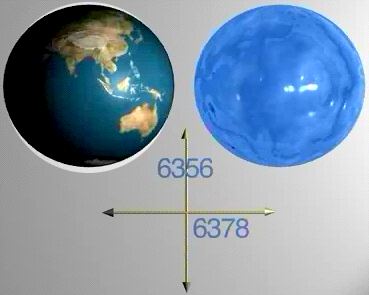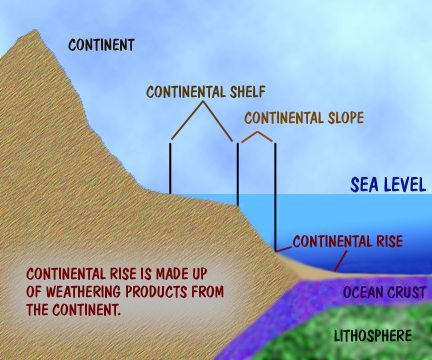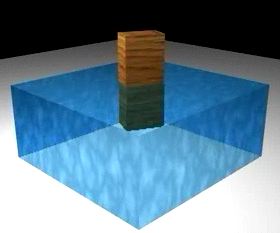
When an object spins it exerts centrifugal force. This is an outward force that is the strongest at the point farthest from the spinning center and perpendicular with the axis of spin.
In the case of a sphere, that force is maximized at the equator and can cause a bulge at that point. If the sphere is made out of a hard, non compressive material (steel) then the amount of deformation is very small. If it made out of something pliable (rubber like), then it increases with increasing speed of rotation and is easily visible.

The earth is just such a rotating sphere, and as it happens, it is about 21 km wider if measured at the equator . (vs. measurement through the two poles.)
If a conceptual earth is created from nothing but water, the degree of deformation almost exactly matches the actual deformation of the planet. Since we know the earth is not made up mostly of water, we are lead to the idea that the center material must be deformable in a similar way.
Conclusion:
The interior of the earth is not rigid, and can undergo deformation under pressure or external force.

The exterior of the earth is made up of land and ocean. The ocean comprises about 71% of the earths surface and has been growing slowing for many years. The land is distributed over the remaining 29% but the majority of it is located in the Northern hemisphere.
Modern day shorelines do not match up well with the continental crust and the theoretical ocean boundaries. This is due to the sea level fluctuating.
If the earth is a closed system, where does the extra water come from?
The answer is the "polar glaciers". These enormous ice masses hold more than 24,000,000 km3 of water. More than enough water to raise the world oceans up to 66 m (~200 feet). As glaciers melt they push the ocean higher on to the continents.
This is a profile of a continent and its contact area with the ocean.
The "continental shelf" is the area of most recent contact, and there has been little time for the ocean to aid in the erosion of the continent.
Further out is the "continental slope". The bottom of this slope is actual the part of the continent that is in contact with the sea floor. (Oceanic crust.) The "continental rise" is the area of silt deposition than has settled from erosion of the continent.
If the outline of a continent were made at the edge of the slope, then there would be 40% land mass and 60% water mass covering the surface of the earth. This has been more nearly achieved in the past during times of glaciation (also known as "ice ages").
The oceans cover the longest mountain ranges on earth. They lie at the center of the deep oceans and divide the ocean basins into two "abyssal planes".
If you look at a group of objects floating in a liquid, they will tend to float at different levels. One reason is their internal density. Rocks tend to float at a lower level than beach balls. (Remember density is weight per unit volume.) For any given density of material an object will displace as much water as its overall weight.
First, objects will only float if their density is less than the material they are floating in. Water has a density of 1 gm per cc. A piece of floating wood must then have a density less than 1 gm per cc or it would sink. Another way to look at this is that the wood has more volume for the same weight.
The piece of wood will displace its weight in water, and that which remains will be above the water line around the wood.
 |
 |
| NEXT | TOC | PREV |